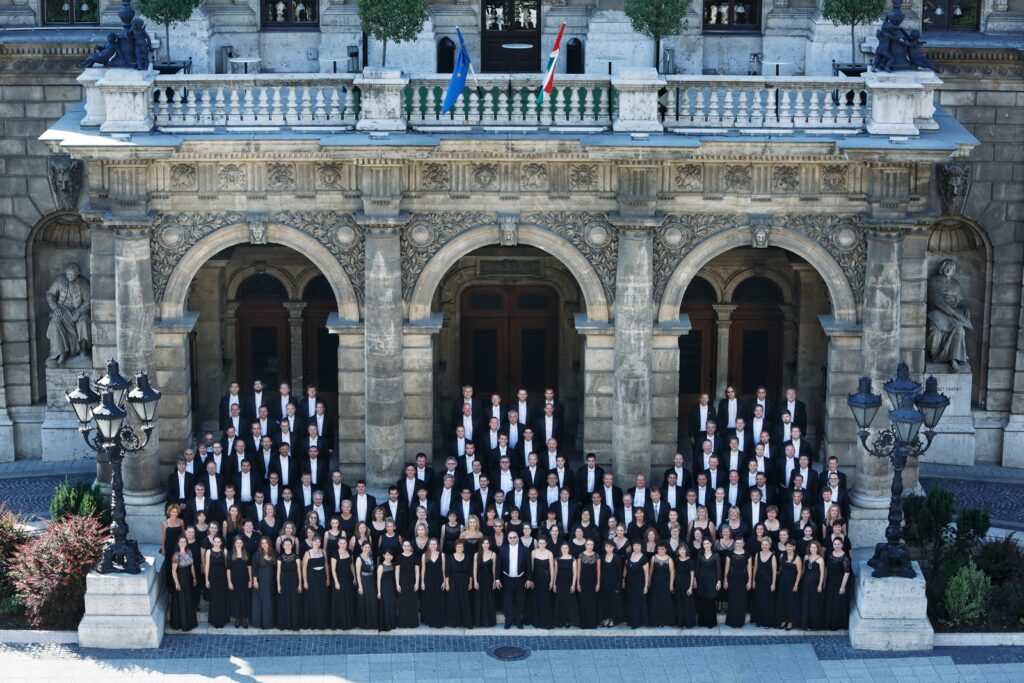Temporada Darcos presents IMPERADOR the most imposing and masterful piano concerto
by Ludwig van Beethoven
HUNGARY STATE OPERA ORCHESTRA , one of the oldest orchestras in Europe
NUNO CÔRTE-REAL, maestro
ANTÓNIO ROSADO, piano
8th March [Wednesday | 21:30]
Teatro-Cine de Torres Vedras
9th March [Thursday | 21:00]
Aula Magna of the Rectory of the University of Lisbon
Free Entry
The Hungarian State Opera Orchestra, founded by Ferenc Erkel (1810-1893), is one of the rare European ensembles with more than 180 years of continuous existence, having counted, among others, with the mythical Gustav Mahler (1860-1911) and Otto Klemperer (1885-1973) as titular maestros. Its presence among us is enriched by António Rosado, a major figure in the Portuguese musical universe, for his versatility, technical mastery and interpretative finesse. Written on the 8th March 1914, and published the following year, in the 2nd and last number of the magazine Orpheu, the poem Chuva Oblíqua by Fernando Pessoa is the starting point for Nuno Côrte-Real’s op.45. The languid spleen that runs through part VI of the poem, as well as the vivid memories of an evoked childhood, are musically taken over by a set of colours with an expressionist tendency. Piano and orchestra, sometimes in dialogue, sometimes in confrontation, in a succession of almost hypnotic atmospheres. Between June and August 1778, Mozart would write, in a single stroke, a monumental symphonic triptych deeply contrasting: symphonies no. 39, 40 and 41. Remarkable for its almost tragic emotional intensity (not by chance, it would be Mozart’s most played symphony during the Romantic period), and endowed with a melodic-harmonic apparatus equally languid, symphony no. 40 is one of the most inspired pages of Mozart’s production. Written between 1808-09, the piano concerto op.73 is the apotheosis of a creative period Beethoven called the Heroic. Just as the Symphony No. 3 (composed between 1802-04) would change the perception of what a symphony could be, the Concerto No. 5 rips the classical model to shreds, becoming the reference for the romantic generation that would follow. The virtuoso piano introduction leads into a long exposition by the orchestra, followed by a luxuriant dialogue between the two forces. Considered by many to be the most lyrical of Beethoven’s compositions, the 2nd movement presents a melody in the manner of a nocturne. The unspeakable atmospheres, of disarming musical tenderness, lead to the final exhilarating rondo. A mid-19th century critic would lapidary sum up “the most original, most inventive, most effective and most difficult of all concertos”.
Programme:
N. Côrte-Real (b. 1971)
The Whole Theatre is a White Wall of Music, op. 45
W. A . Mozart (1756 – 1791)
Symphony No. 40, in G minor, K. 550
I. Molto allegro
II. Andante
III. Menuetto: Allegretto
IV. Allegro assai
L. van Beethoven (1770 – 1827)
Concerto for Piano and Orchestra in E-flat Major, op. 73, “Emperor
I. Allegro
II. Adagio un poco mosso

